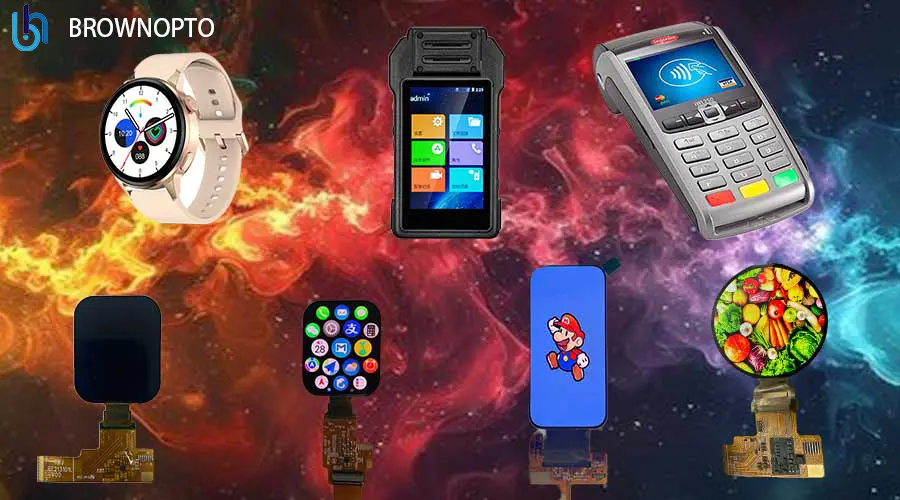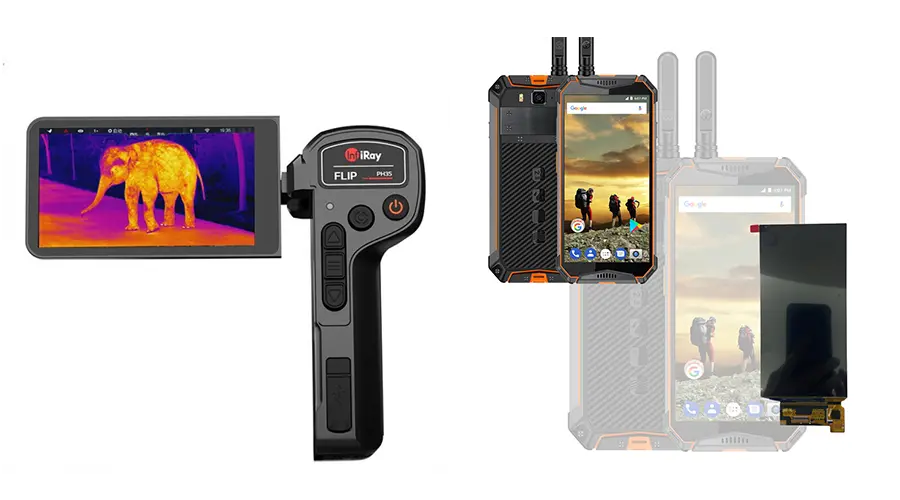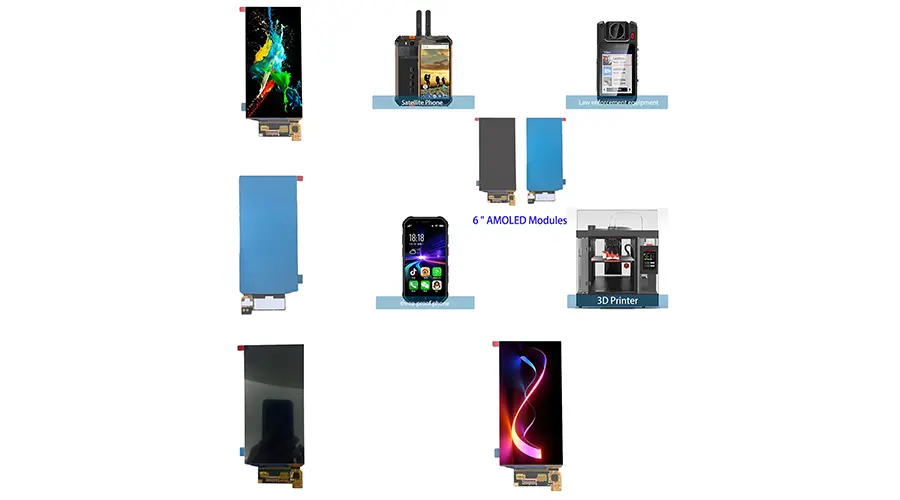A BROWNOPTO Engineering Case Study with MedTech Innovations Inc.
Kliyente: MedTech Innovations Inc. — a U.S.-based innovator in point-of-care (POC) diagnostic systems
Application: Portable Blood Chemistry Analyzer for Emergency & Rural Healthcare
BROWNOPTO Product: Custom 4.40" On-Cell Touch LTPS AMOLED Display Module (Model: BR440102-A1)
Interface: MIPI DSI 2-lane, 60Hz refresh rate
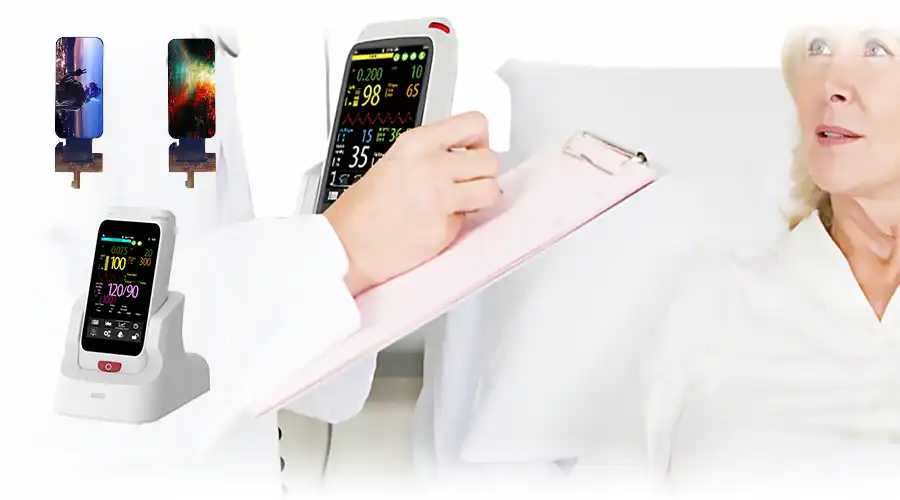
Project Background & Technical Challenges
Hinangad ng MedTech Innovations na palitan ang legacy na LCD sa flagship handheld blood analyzer nito ng isang susunod na henerasyong display na maaaring matugunan ang mahigpit na pangangailangan ng mga klinikal at field na kapaligiran. Ang device ay ginagamit ng mga paramedic, lab technician, at rural health worker—kadalasan sa hindi nakokontrol na mga kondisyon ng pag-iilaw, temperatura, at halumigmig.
Kasama sa mga pangunahing kinakailangan sa pagpapakita ang:
Pagbabasa ng sikat ng araw:Minimum na 600 nits brightness na may anti-reflective (AR) treatment para matiyak ang pagiging madaling mabasa sa ilalim ng direktang sikat ng araw (≥100,000 lux).
Katatagan ng kapaligiran:Matatag na operasyon sa buong -20°C hanggang +70°C na temperatura ng kapaligiran at 95% na relatibong halumigmig (hindi nakakapag-condensing).
Mga kadahilanan ng tao:capacitive touch na compatible sa guwantes na may pagtanggi sa wet-finger at mababang latency (<20 ms).
Form factor:Kapal ng module ≤0.8 mm upang paganahin ang isang slimmer, mas ergonomic handheld chassis.
Pagsunod sa regulasyon:Ganap na pagsunod sa RoHS 2.0 (2015/863/EU), REACH (SVHC < 0.1%), at halogen-free (HF) na mga pamantayan ng materyal para sa medikal na kagamitan.
Pangmatagalang pagiging maaasahan:50,000+ na oras ng operational lifetime na may kaunting luminance degradation.
Ang mga off-the-shelf na AMOLED panel ay nabigong matugunan ang mekanikal na tibay at optical consistency na kinakailangan para sa Class II na mga medikal na device. Nangangailangan ang MedTech ng isang kasosyo sa display na may kakayahang co-development—hindi lang supply.
Co-Engineered AMOLED Display Solution ni BROWNOPTO
Ang BROWNOPTO ay nakikibahagi sa isang 6 na buwang joint development program kasama ang mga hardware at firmware team ng MedTech. Ang pakikipagtulungan ay sumasaklaw sa optical na disenyo, mekanikal na pagsasama, pagpapatunay ng kuryente, at dokumentasyon ng regulasyon.
Kasama sa mga pangunahing milestone ng engineering ang:
Optical stack optimization:Pagsasama ng hybrid na HC (Hard Coat) + AR polarizer para bawasan ang surface reflectance sa <1.5% habang pinapanatili ang scratch resistance (≥3H pencil hardness).
On-cell touch integration:Custom na pag-tune ng CST3530 touch controller firmware para suportahan ang 5mm gloved finger input at tanggihan ang mga false trigger mula sa moisture o palm contact.
Pamamahala ng thermal:Pagpapatupad ng low-thermal-expansion FPC (Flexible Printed Circuit) upang maiwasan ang delamination sa panahon ng thermal cycling.
Power sequencing:Magkasamang disenyo ng display power-up/down timing sa MedTech's PMIC para maalis ang screen flicker sa panahon ng boot.
Pag-calibrate ng kulay:Gamma na ginawa ng pabrika at pag-calibrate ng white-point (D65, 2.2 gamma) upang matiyak ang tumpak na pag-render ng mga elemento ng medikal na UI (hal., mga icon ng babala, mga graph ng trend).
Teknikal na Pagtutukoy
| Parameter | Pagtutukoy | Pamantayan sa Pagpapatunay |
|---|---|---|
| Uri ng Display | 4.40" LTPS AMOLED | — |
| Aktibong Lugar | 54.3 × 115.8 mm | — |
| Resolusyon | 568 × 1210 pixels (Buong HD+) | Densidad ng pixel: 296 PPI |
| Liwanag | 600 nits (karaniwan), 800 nits (peak) | Sinusukat ayon sa ISO 13406-2 |
| Contrast Ratio | 100,000:1 (karaniwang) | Walang hanggan sa madilim na kondisyon |
| Touch Technology | On-cell capacitive (CST3530 IC) | Sinusuportahan ang 10-point multi-touch |
| Viewing Angle | ≥85° (lahat ng direksyon) | ΔE < 5 sa 80° |
| Kapal ng Module | 0.75 mm (hindi kasama ang FPC) | — |
| Interface | MIPI DSI 2-lane, 60 Hz | Sumusunod sa MIPI Alliance v1.3 |
| Operating Temp. | -20°C hanggang +70°C | IEC 60068-2-1 / -2-2 |
| Temp. | -30°C hanggang +80°C | — |
| Pagsunod | RoHS 2.0, REACH, HF, ISO 10993-5 (sinubukan ang cytotoxicity) | Magagamit ang buong materyal na deklarasyon |
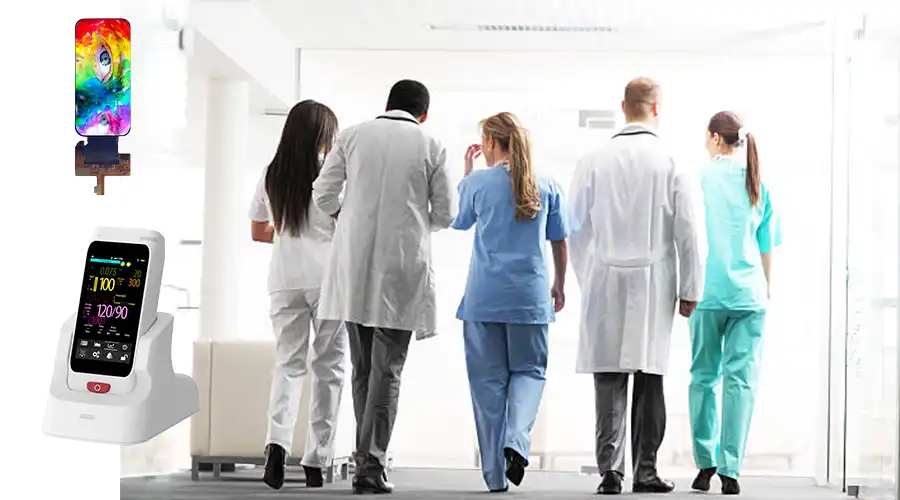
Validation & Field Performance
Ang BR440102-A1 module ay sumailalim sa mahigpit na pagpapatunay sa parehong BROWNOPTO at MedTech na mga pasilidad:
Pagsusuri sa kapaligiran:Naipasa ang 240-hour high/low temperature cycling (-20°C ↔ +70°C) at 96-hour 95% RH humidity exposure na walang delamination o mura.
Katatagan ng mekanikal:Nakaligtas sa 3 patak mula 1.2m papunta sa plywood (bawat IEC 60601-1-11) nang walang functional failure.
Optical consistency:Pagkakapareho ng liwanag >85% sa buong panel; pagbabago ng kulay (Δu'v') < 0.01 sa ilalim ng pagkakaiba-iba ng anggulo ng pagtingin.
Klinikal na piloto:Na-deploy sa 500 unit sa 12 US emergency medical services (EMS) na ahensya sa loob ng 12 buwan—zero display-related na field failure ang iniulat.
"Ang BROWNOPTO ay hindi lamang naghahatid ng isang display—nai-embed nila ang kanilang mga sarili sa aming proseso ng NPI. Nalutas ng kanilang engineering team ang mga isyu sa touch noise na pinaghirapan namin sa loob ng maraming buwan at tiniyak na natutugunan ng AMOLED ang mga kinakailangan sa dokumentasyon ng FDA para sa kakayahang masubaybayan ang materyal. Ang partnership na ito ay nakatulong sa aming paglulunsad ng produkto."
— Nangunguna sa Hardware Systems Engineer, MedTech Innovations Inc.
Bakit Nagpapakita ang BROWNOPTO AMOLED ng Excel sa Mga Medikal na Aplikasyon
Ang diskarte ng BROWNOPTO ay higit pa sa supply ng bahagi. Nag-aalok kami ng end-to-end na display engineering para sa mga application na kritikal sa misyon:
Application-unang disenyo:Mga display na inengineered para sa real-world na paggamit—hindi lang mga specs ng datasheet.
Vertical na pagsasama:In-house na optical coating, touch integration, at reliability testing.
Suporta sa regulasyon:Buong materyal na dokumentasyon ng pagsunod (RoHS, REACH, HF, ISO 10993) para sa mga pagsusumite ng medikal na device.
Nasusukat na NPI:Mula sa prototype hanggang sa mass production na may pare-parehong kalidad (PPM <50).
Pandaigdigang suporta:Mga pangkat ng engineering sa Asia, North America, at Europe para sa mabilis na pagtugon.
Handa nang isama ang isang mataas na maaasahang AMOLED na display sa iyong medikal, pang-industriya, o panlaban na device?
Makipag-ugnayan kay BROWNOPTOpara sa isang custom na konsultasyon sa display—ininhinyero para sa pagganap, na ginawa para sa pagiging maaasahan.
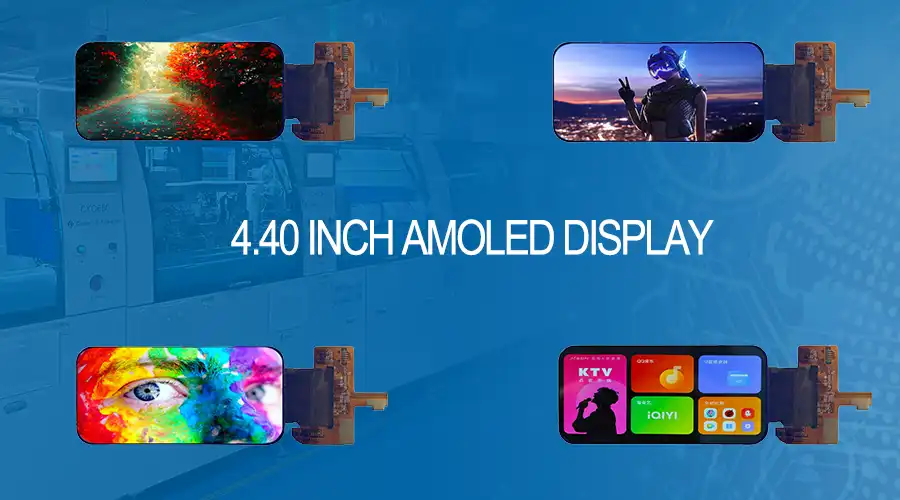
FAQ
Ano ang sanhi ng OLED burn-in at paano ito maiiwasan?
Ang burn-in ay nangyayari kapag ang mga organikong materyales ay bumababa nang hindi pantay dahil sa matagal na pagpapakita ng mga static na larawan. Kasama sa pag-iwas ang paggamit ng auto-dimming, screen timeout, pixel shifting, logo dimming, at pag-iwas sa mataas na liwanag para sa static na content.
Ang mga OLED display ba ay angkop para sa panlabas o mataas na liwanag na kapaligiran?
Ang mga karaniwang OLED ay nakikipagpunyagi sa direktang sikat ng araw dahil sa limitadong peak brightness. Gayunpaman, ang ilang mga modelo ay nagtatampok ng mas mataas na nits output at anti-reflective coatings. Para sa ganap na paggamit sa labas, isaalang-alang ang Mini-LED o espesyal na high-brightness na mga OLED na variant.
Gaano katagal karaniwang tumatagal ang mga OLED display?
Ang panghabambuhay ng OLED ay karaniwang na-rate sa 30,000 hanggang 100,000 na oras hanggang L50 (kalahating liwanag). Ang haba ng buhay ay nakasalalay sa mga pattern ng paggamit, antas ng liwanag, at temperatura ng pagpapatakbo. Mas mabilis na bumababa ang mga asul na pixel, kaya maaaring magbago ang white balance sa paglipas ng panahon.
Maaari bang gamitin ang mga OLED para sa palaging naka-on na mga display (AOD)?
Oo — Ang mga OLED ay perpekto para sa AOD dahil sa mababang paggamit ng kuryente kapag nagpapakita ng mga madilim na tema o maliliit na icon. Upang bawasan ang panganib sa pagkasunog, gumamit ng dynamic na pagpoposisyon, mababang liwanag, at limitahan ang mga aktibong pixel.
Ano ang pagkakaiba sa pagitan ng AMOLED at PMOLED?
Gumagamit ang AMOLED (Active Matrix OLED) ng TFT backplane para sa mabilis na pag-refresh at malalaking resolution, perpekto para sa mga smartphone at wearable. Ang PMOLED (Passive Matrix OLED) ay direktang nagtutulak ng mga row/column, na angkop para sa mas maliit, mas simpleng mga display na may mas mababang halaga.
Sinusuportahan ba ng mga OLED display ang touch functionality?
Oo — karamihan sa mga OLED module ay nagsasama ng capacitive (PCAP) o resistive touch layer. Ang mga nababaluktot na OLED ay madalas na ipinares sa mga curved touch sensor para sa walang putol na naisusuot at mga disenyo ng sasakyan.
Mga pinakabagong artikulo
-
Bakit 1–2" na AMOLED ang Susi sa AR/XR sa 2025
Bakit Nagiging Mahalaga ang 1–2 Inch AMOLED Display sa AR/XR Boom (2025 Industry Insight) body {f
-
Understanding OLED Display Technology: Principles, Performance & Applications
OLED (Organic Light Emitting Diode) displays are a class of self-emissive display technology in whic
-
From Wearables to AR Glasses – How OLED Displays Are Redefining Visual Experiences in 2025
By 2025, OLED (Organic Light-Emitting Diode) technology has transitioned from luxury smartphone disp
-
Mga Stretched Bar LCD Display para sa Retail: Palakasin ang Benta at Pakikipag-ugnayan sa Mga Supermarket
Tuklasin kung paano pinahusay ng mga stretched bar LCD display ang shelf-edge marketing ng supermarket, humimok ng mga benta, at bawasan
-
Naka-stretch na LCD Solutions para sa Mga Restaurant at Hospitality Venues
Stretched LCDs offer sleek, high-brightness displays perfect for restaurant menus and hospitality si

